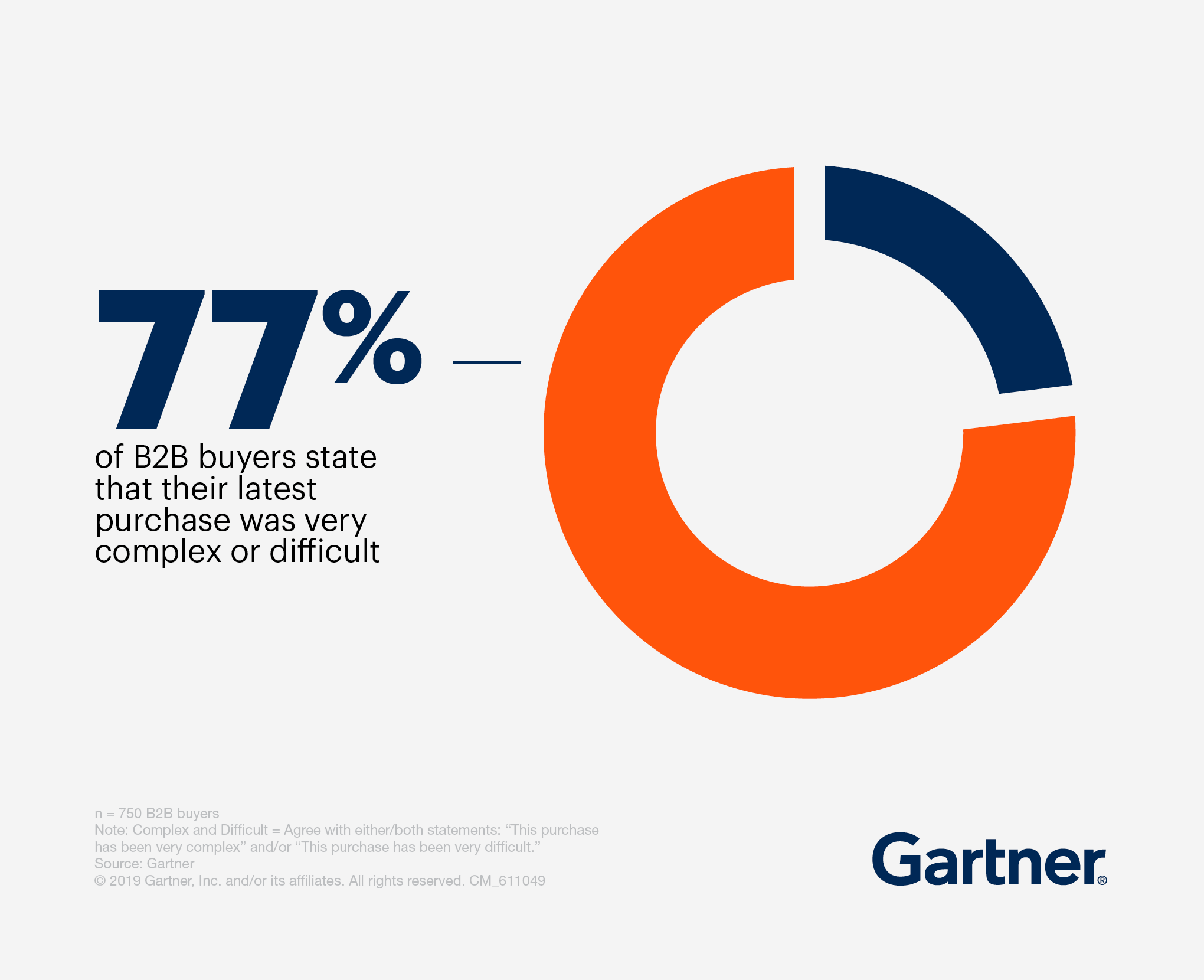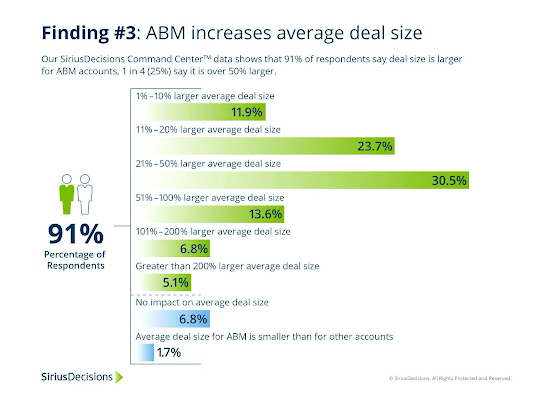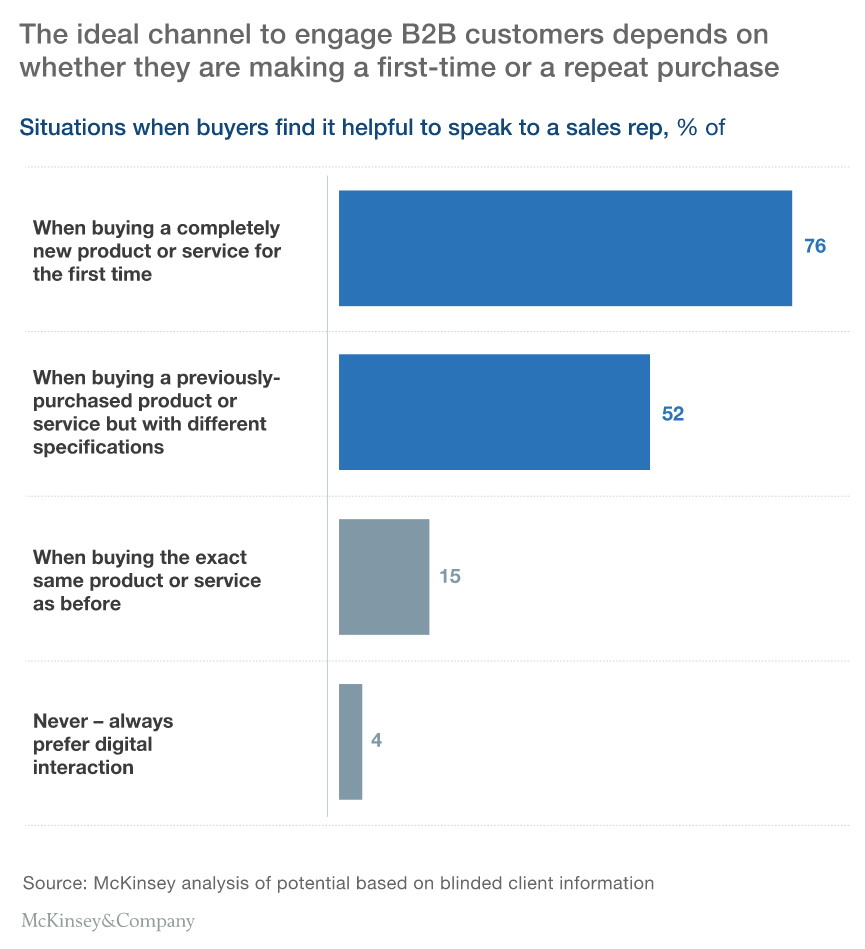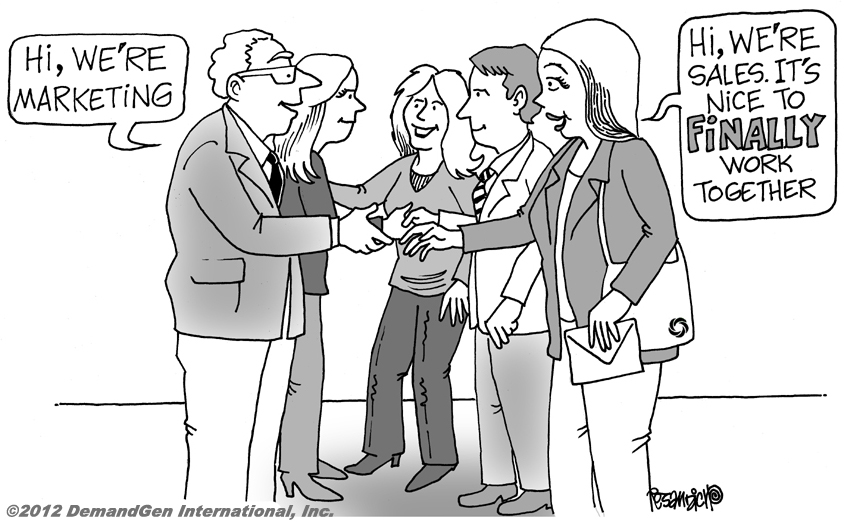
There are pipelines to fill, quotas to meet, and metrics to supersede.
- Introduction
- What Is B2B Sales?
- A Typical B2B Selling Process
- Changing Trends In B2B Sales
- Top Three Challenges Of B2B sales
- The Emergence Of The New Buyer
- Top Five Ways To Grow B2B Sales
- Conclusion
This is a common scenario in the sales department of most companies. However, there are much bigger players waiting outside to compete, and revenue stagnation is not even a thought most sales managers can have.
B2B sales require grit and the mad audacity to charge head-on. Above all, it requires the implementation of new as well as proven strategies that can drive results.
The changing B2B sales processes have forced many companies to rethink their strategy and how they can influence the modern-day buyer. In this post, we look at the top five B2B sales strategies that will help galvanize your sales team and win more customers in 2021.
Before we begin, let’s understand what is B2B sales.
What Is B2B sales?
B2B sales is an acronym for business-to-business sales. As the name suggests, it implies companies selling products or services directly to other businesses. The fact that the business happens between two companies makes the entire process complex and large, involving multiple stakeholders to approve the purchase.
According to a study by Gartner, selling a B2B solution requires approval from at least 6-10 decision-makers. This results in a longer sales cycle, which can last for weeks, if not months.
In B2B sales, the deal is closed after a series of discussions, phone calls, online demos, and face-to-face meetings over weeks and months. Today, these tactics are gradually becoming ineffective due to the changing trends in B2B sales.
So, what changed?
The Typical B2B Selling Process
Consider the typical B2B selling process, which usually involves 5-8 steps. Here’s what happens at each step:
Step 1 - Lead Qualification
A Sales Development Rep (SDR) has to either qualify or reject leads generated by marketing through various channels such as trade shows, email marketing, advertising, etc. The rep can also research these leads and qualify them based on several parameters.
Step 2 - Outbound Prospecting
The SDRs also use several tactics such as cold calling, cold emails, and social media to build a list of potential prospects. They usually have a multi-touch sales campaign that includes a mix of emails and calls until they begin a conversation with the buyer.
After qualifying, this lead is passed to the Account Executive (AE) for a demo.
Step 3 - B2B Demo
The account executive then provides an online demo to understand the requirements of the prospective company by asking questions and unearthing all the pain points.
It is usually a discovery session where the AE builds rapport, attentively listens to the prospect, and positions the solution that best addresses those pain points.
Step 4 - Deal Closing!
 Source: Gartner
Source: Gartner
I the demo goes well, the account executive has to provide all the required information to the prospect to influence other decision-makers within the company. At this stage, the marketing team usually provides materials like sales collaterals, ROI calculators, decks, etc.
One way to understand it is that buyers have to make a case for your product/service. With 77% of B2B buyers saying that their latest purchase was complex or difficult, the account executive has to ensure that the buyer's journey is as easy as possible.
The Final Step - Step 5 - Customer Success
The B2B sales cycle is far from over, even after the deal is signed. There is usually a hand-off between the account executive and the customer success rep. After that, the AE has to ensure that he/she grows the deal size gradually over time through upselling and cross-selling products/services.
The executive also uses the account to get case studies and videos from the client to use as a means of influencing other potential buyers.
This is a seemingly straightforward and predictable process, with marketing filling the sales funnel with qualified leads and the sales team moving them down the pipeline in the sales funnel.
However, the B2B sales cycle is rapidly changing today due to the galactic amounts of information available on the internet. Today, the buyer’s journey looks a lot different from what it was a decade ago. And there is an obvious disconnect between the traditional B2B sales cycle and the buyer’s journey.
Buyers usually try to find a solution to their pain points by -
- Conducting online research to discover various solutions in the market.
- Reaching out to friends/social media/online groups for recommendations.
- Once they zero in on a few solutions, read about them on review portals.
- With all their digital footprints on the search engine, they might even click the ads of the solutions they are interested in and avail of an offer.
- Then they reach out to the company with all the information to complete the sale.
This is a typical buyer’s journey in today’s time that has turned the traditional B2B sales cycle on its head.
The days when the sales rep was in the driver's seat of the buying process are long over. New trends are emerging in B2B sales that need to be considered for growing revenue and remaining profitable in years to come.
Changing Trends In B2B Sales
The B2B industry is growing at a lightning-fast pace and is likely to reach $1.8 trillion by 2023, compared to only $1.1 trillion in 2018 according to Forrester. It means there is a lot of selling to do but to customers who are more informed, sophisticated, and mature.
Modern buyers are unlikely to fall for cheap selling tactics and are unlikely to purchase from companies that adopt such practices.
Here are the top five B2B sales trends that have been making headlines since the last few years -
1. CRM & Personalization
Companies are increasingly adopting Customer Relationship Management (CRM) because it allows data to be stored in one central system. According to reports, the CRM market potential is expected to grow at 12% annually, reaching $82 Billion by 2025.
Since customers today use multiple devices, this data needs to be captured for creating personalized experiences.
CRM provides an excellent way to integrate data sources from sales, marketing, social media, and customer service, allowing sales reps to customize the customer journey and create more effective messaging.
2. Account-Based Marketing
Account-Based Marketing (ABM) is likely to see an uptick in the next few years because it believes in better aligning the sales and marketing teams.
When these two teams come together, they can identify the best-fit accounts and deliver personalized, integrated messages without any ambiguity, eventually creating trust, closing more deals, and boosting revenue.
 Source: siriusdecisions
Source: siriusdecisions
3. Meaningful Automation
A 2018 Salesforce survey pointed that an average salesperson spends around 34% of their time selling, while the remaining is spent on administrative tasks. However, this scenario is changing due to automation, which is being implemented to eliminate repetitive, time-consuming work.
Technologies such as artificial intelligence (AI), chatbots, and other digital tools are being used to channel the sales reps' time on more valuable work.
Pro Tip: do not automate processes where the prospect expects meaningful interactions and personalization. Do not ambush their privacy!
4. Sales Enablement
Sales enablement is about developing the best tools and strategies that help customers move a step closure to the deal. It helps the SDRs become situationally fluent, giving them flexibility with the buyer’s demands.
best of all, it brings together sales and marketing teams to create messages that are credible, easy to understand, and relevant.
According to Marketo, 67% of leads are more likely to become customers when sales and marketing are aligned. Some examples of sales enablement include blogs, whitepapers, training material, and case studies.
5. Videos
Videos will account for 82% of all internet traffic by 2022, according to Cisco’s Visual Networking Index. Videos have gained momentum in the last few years as they're more personalized than emails and impersonal messages.
They are a crucial touchpoint in the sales campaign, along with other channels such as calls and direct emails. Video blogs are also considered one of the best ways to connect with more audiences at large and to pique their interest.
In other words, videos are a new-age communication method that are substitutes for in-person interactions.
These rapidly changing trends are a result of the existing challenges in B2B sales that are forcing businesses to think out of the box when it comes to their B2B sales strategies.
Here are the top three challenges that these trends intend to resolve -
Top Three Challenges In B2B Sales
1. Leaking Sales Pipeline
According to a study by Salesforce, 57% of sales reps are likely to miss their quota due to convoluted B2B sales processes.
The reason?
B2B sales reps spend a lot of their time on manual, administrative tasks such as writing emails, updating data, researching, and scheduling client calls, instead of engaging with prospects.
With the changing customer or buyer journey, sales teams need to be creative and adjust their processes according to the requirement of the customers.
2. Creating Personalized Experiences
In a hyper-connected world, B2B buyers expect the same level of personalization as B2C buyers. The customers want to be reached through the channels they prefer.
Therefore, SDRs need to create a multi-touchpoint campaign that includes several channels such as email, phone, social media, and events, to move the buyer forward in the sales funnel.
This is one of the toughest challenges in B2B sales when done without the right technology.
3. New Data Protection Rules
The rise of the internet and the subsequent digitalization has forced governments to think of data privacy and the security of their people.
There has been a growing concern over the privacy of consumer data and its weaponization, prompting rules like General Data Protection Regulation (GDPR), which affects companies selling services/products in Europe.
While there is no going around data protection, companies need to simply comply with the new regulations and view it as an opportunity to improve their data quality and infrastructure.
The Emergence Of The New Buyer
The buyer persona has changed dramatically over the last few years. According to Hanne Tuomisto-Inch, the B2B Industry Head at Google, many younger professionals (between 18 and 35) now hold decision-making positions in companies.
Since millennials are used to digital technologies, they are completely transforming the traditional way of purchasing goods or services. They are not only skeptical about the marketing and sales messaging they receive but also prefer researching the solution themselves.
In fact, a whopping 94% of B2B buyers admit to researching before finalizing their decision, according to an Accenture study.
Another study by the Forrester group claims that 59% of buyers prefer researching online rather than speaking with a salesperson because they feel that the reps push their agenda instead of solving their problem.
The writing is on all the walls - focusing on the traditional method of selling rather than helping customers along their purchase journey is a recipe for failure. It is, therefore, no surprise that the B2B sales team that includes social media as part of its sales strategy tends to outperform the rest.
Here's a closer look at some of the proven strategies to grow B2B sales.
Top Five Ways To Grow B2B Sales
1. Create Content Useful For Customers
Just because the modern buyer likes to research before finalizing their decision, it does not mean that you can’t interact with them. On the contrary, it gives you ample opportunities to interact with them during the journey.
Since B2B buyers rely heavily on online content and reviews, it is good to provide them with the right kind of information.
B2B sales teams should create a content library that houses all key sales assets such as case studies, white papers, and industry articles, aimed at resolving common issues of the buyer.
Once the repository is in place, the sales rep should share it with the buyers through email, social media, or other channels.
2. Target Customers Where They Are Most Active
Driving growth in the future will need companies to have the best of both worlds - calling and social media.
According to a report by McKinsey, B2B customers’ ideal communication channel depends hugely on whether they are making a repeat or first purchase. However, in the digital world, not engaging on social media means you are simply giving your prospects to your competition.
Most B2B buyers use social media platforms to ask questions, seek reviews, and voice their concerns. As a B2B company, your goal should be to participate in the conversation and influence your prospect’s buying decision.

3. Leverage Technology To Avoid Funnel Leaks
Companies with ambitious goals will embrace advanced analytics, chatbots, and cognitive technologies to make strategic decisions - the sales opportunities to pursue, what resources to allocate to which account, and so on.
Market leaders are also leveraging these technologies to create granular accounts and geographic profiles of their buyers, which are then augmented with all the data available online such as social media and news reports.
Advanced analytics is also being used for lead scoring based on the customer profile, predicting when to contact prospects, and understanding the factors that drive conversion rates.
4. Better Align Sales Teams & Marketing teams
In most organizations, alignment between the sales and marketing teams is a huge problem. That’s because there is a lack of consensus on even the most common things like the definition of a qualified lead.
Other examples where there is a disconnect between teams include the lack of an accessible content library and irrelevant KPIs.
When sales and marketing teams are better aligned, companies experience an average of 20% growth in revenue. Other benefits include higher brand awareness, a bigger average deal size, and higher company revenue.

5. Make The Sales Team Your Brand Advocate
Sharing relevant content with your prospects will help your B2B sales team close more deals. But that’s not the only way.
Use your sales team as brand advocates and position them as subject matter experts. Sales reps with an in-depth knowledge of the product/services can help placate the concerns of modern buyers, who are increasingly becoming skeptical about emails and messages sent by the sales and marketing teams.
They can interact with the prospect throughout their buying journey and provide information relevant to their pain points.
Final Thoughts
B2B buyers have changed, and so must B2B sales teams. Sales today are no longer about cold calling or waiting for prospects to reach out to the business. On the contrary, it demands proactive ways to engage with prospects and share relevant content to help them decide.
All of this, of course, begins right when you have a great source of qualified leads so that the efforts are focused on prospects that might actually be interested. ReadyContacts is the bright light when it comes to getting leads for B2B sales, so why to work hard sourcing leads when you can work smarter with ReadyContacts?
Looking for a dataset?
Get a customized dataset for your next campaign from Ready and save yourself from expensive annual subscriptions :)
"After piloting various data vendors, it was easy to see that ReadyContacts is a cut above."






















